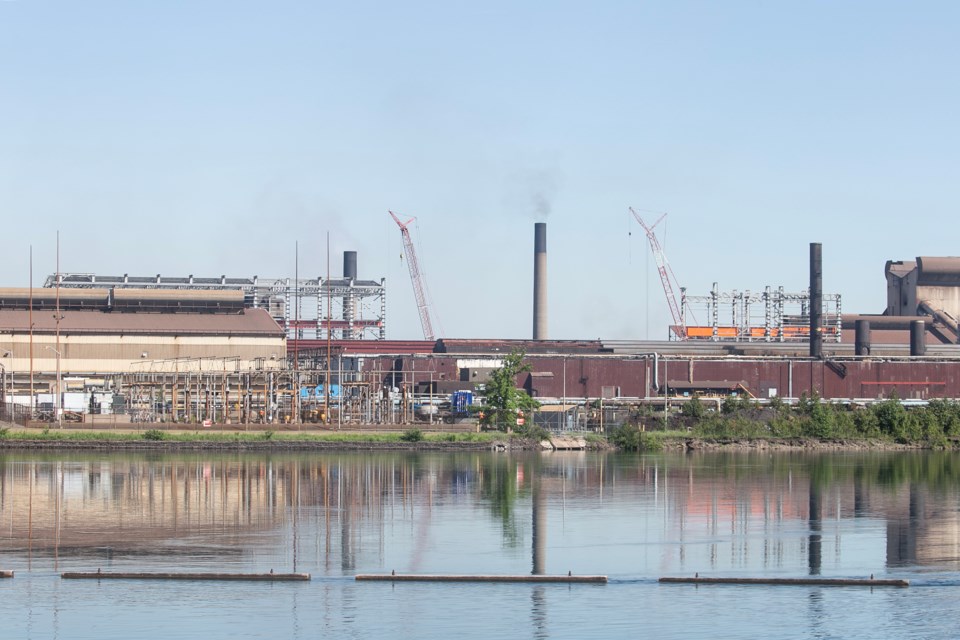The province's Minister of Energy paid a visit to Sault Ste. Marie this morning to announce the acceleration on a trio of transmission line projects — two of which have local implications.
Ontario says the projects, which will be developed by Hydro One, will help power Algoma Steel’s conversion to its future electric arc furnace, as well as support new homes, critical mineral development, and a number of job creators.
“More and more people are moving to our province, and we need a plan for Ontario’s clean energy future,” Energy Minister Todd Smith told a group of dignitaries on Monday. “No plan can be successful without a transmission buildout to get that electricity to the homes and businesses that are eventually going to need that.”
Minister Smith said the two lines that will run between the Sault and Sudbury “are critical to supplying Algoma Steel’s transition to electric arc furnaces” and that they will “support additional load connections in the Sault Ste. Marie area and increase transfer capacity into northwestern Ontario.”
According to the province, the transmission lines are promised to be operational in 2029 — the same year Algoma Steel intends to fully transition to electric arc steelmaking.
“This forward-thinking investment paves the way for regional economic prosperity and positions Algoma Steel at the forefront of green steel production in Canada,” Algoma Steel CEO Michael Garcia said in a news release.
Minister Smith continued by saying he has directed the Ontario Energy Board to declare each of the three new transmission lines as priority projects “so they can be in service sooner.”
The projects include:
- The Mississagi to Third Line – an approximately 75 km, 230-kilovolt transmission line between Mississagi Transformer Station (west of Sudbury) and Third Line Transformer Station (Sault Ste. Marie)
- The Hanmer to Mississagi Line – an approximately 205 km, 500-kilovolt transmission line between Hanmer Transformer Station (Greater Sudbury) and Mississagi Transformer Station (west of Sudbury)
- The Greater Toronto Area East Line – an approximately 50 km, 230-kilovolt transmission line between either Cherrywood Transformer Station (Pickering) or Clarington Transformer Station (Oshawa) and Dobbin Transformer Station (Peterborough)
Providing remarks in Sault Ste. Marie on Monday, Hydro One CEO David Lebeter said these projects are “a significant step towards both decarbonizing our local industries and making future job-creating investments in our region possible.”
The province also announced that First Nations will have the chance to invest in a 50 per cent equity stake in the transmission line component to the projects once complete, through Hydro One’s Equity Partnership model.
Joined by Batchewana First Nation Chief Mark McCoy, Garden River First Nation Chief Karen Bell, and Chief Craig Nootchai of Atikameksheng Anishnawbek First Nation, Minister Smith noted the projects “will create significant economic and partnership opportunities for Indigenous communities and can help advance reconciliation with Indigenous peoples in Ontario.”
“We want to thank Todd Smith and his team for taking the time to meet with us and hearing our concerns about these projects,” Chief Craig Nootchai said. “To understand that reconciliation begins with including First Nations in the development of these major projects in our territories.”
“These two transmission lines (in northeastern Ontario) will provide both employment and procurement opportunities for all eight First Nations, as well as long-term revenue, that will benefit us for generations to come,” he added.
Acknowledging the acceleration of these projects as a step in the right direction, Mayor Matthew Shoemaker says it’s imperative the city receives access to increased power and energy amid other ongoing energy projects like the PUC’s community-wide smart grid.
“We will continue to advocate for gapping measures between now and 2029 to grow the power supply generated locally, or local power storage, to help get us to 2029 without the risk of blackouts or having to plan steelmaking hours on off-peak times,” he said.
